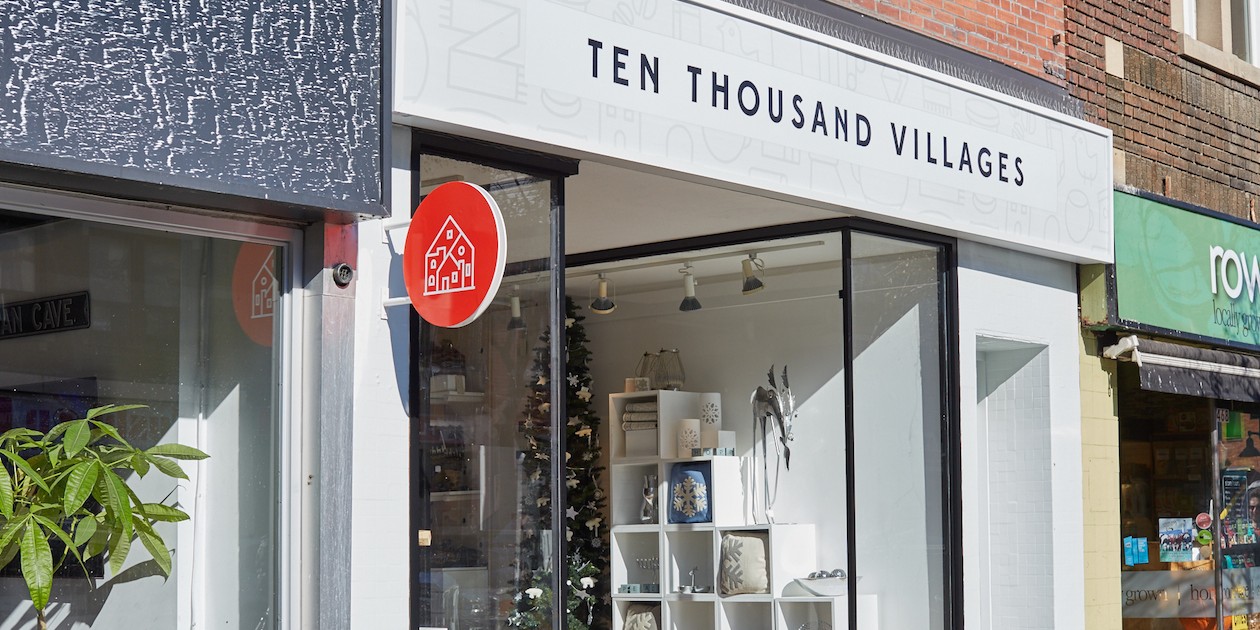 Ten Thousand Villages has begun a brand revitalization aimed at better connecting consumers to the makers of its products from developing countries.
Ten Thousand Villages has begun a brand revitalization aimed at better connecting consumers to the makers of its products from developing countries.
The fair trade retailer launched the makeover in its Bloor Annex store in Toronto on Nov. 4 and will slowly trot out the new look to its 35 store network nationwide and online.
It’s aimed at maintaining current customers and connecting with new ones who are unfamiliar with the retailer, says Holly de Graaf, director of retail operations and public relations at Ten Thousand Villages.
De Graaf notes the retailer was hit hard by the recession of 2008-09 and suffered a steady decline in overall revenue. In 2012, it closed nine stores and cut staff by about 45% at its New Hamburg, Ont. head office, moves that allowed Ten Thousand Villages to stabilize.
The organization had to look at how it could grow to continue to fulfill its mission of creating opportunities and income for artisans in the 29 developing countries it buys from, she says.
It connected with Toronto-based Jackman Reinvents, which agreed to work pro bono with the retailer to create new a brand identity.
The Bloor Annex store was the first to get the makeover because of its high walk-by traffic and its demographics, she says. It’s also smaller than many of the other stores, and if the changes work there they should work across the chain.
 Among the changes is a new, refreshed logo. “It was important for us not to stray too far from the logo that we have,” de Graaf says. “It’s really that connection of the global village to our local lives.”
Among the changes is a new, refreshed logo. “It was important for us not to stray too far from the logo that we have,” de Graaf says. “It’s really that connection of the global village to our local lives.”
The colour palette in-store has become more neutral, to increase the focus on products. Fixtures play a less dominant role visually, but do a better job of showcasing products on display.
“We’ve really rethought how customers walk the floor of our store,” and key categories have been updated with improved signage to help consumers understand what the sections hold.
The goal will be for every product to have an individualized hangtag that will provide info about its maker and how it was made.
Product lines have not changed significantly, but “we are highlighting the product in a way that makes it more shoppable and easier for customers to picture in their everyday lives,” de Graaf says. “We’ve really kicked up our emphasis on Villages as a destination for gifts.”
The Bloor rebranding was promoted with a media opening and emails to current customers.
Felicity PR conducted media relations for the reopening and is working on a holiday campaign nationwide, while Rep Empire is conducting Facebook campaigns for the Bloor store.
Early signs are encouraging. First week sales at the Bloor store were up 34% compared to the same period last year.
So far this year, same store sales nationwide are up 5%, versus the same period in 2014, and plans call for the retailer to open one or two new stores annually for the next several years.
 Jackman Reinvents will be doing customer research in the Bloor Annex store in the next few weeks to test the concept.
Jackman Reinvents will be doing customer research in the Bloor Annex store in the next few weeks to test the concept.
A redesigned website is scheduled for July 2016, while the brand revitalization is being looked upon as a five-year project, with five to seven stores to be redone annually.
“We are a not-for-profit and don’t have a lot of cash reserve to be able to do it all at once,” de Graaf says.
Seventeen Ten Thousand Villages stores are company-owned and the remaining 18 are called board stores – not-for-profit stores run by independent boards of directors.
The retailer plans to refresh its product line with new content over the next few months and de Graaf is traveling to Nepal and Bangladesh in a few weeks to meet with a number of artisans.
While holiday products are top sellers this time of year, the largest category is personal accessories such as necklaces, jewellery and scarves. The current bestselling item is recycled Sari throws from Bangladesh.











